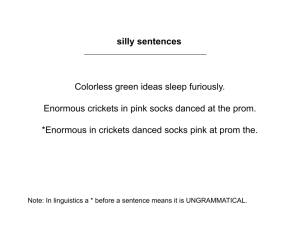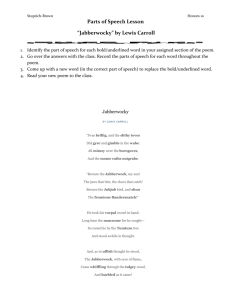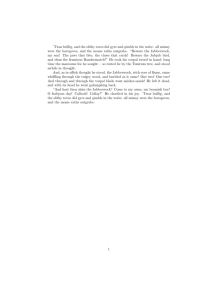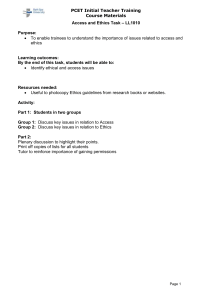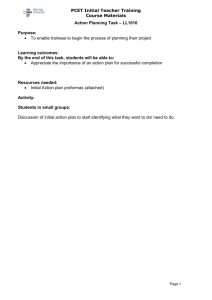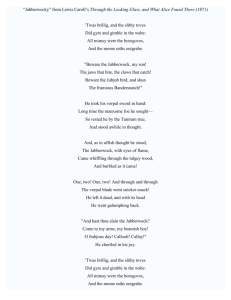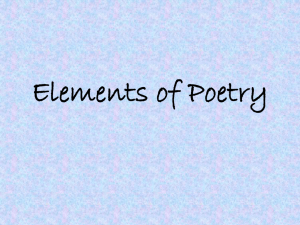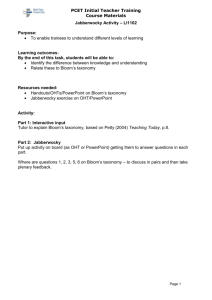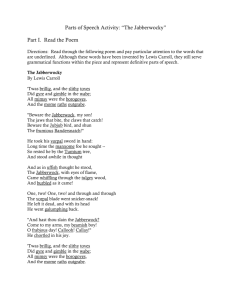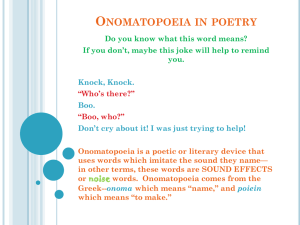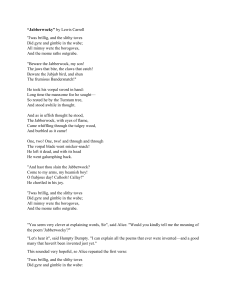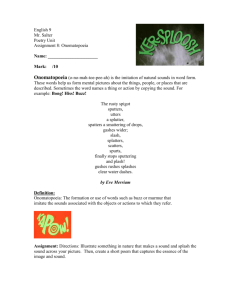Onomatopoeia
advertisement
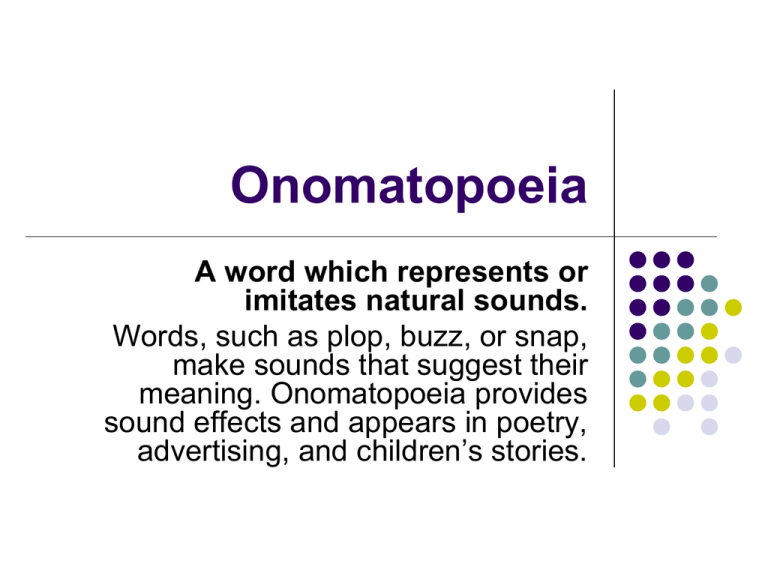
Onomatopoeia A word which represents or imitates natural sounds. Words, such as plop, buzz, or snap, make sounds that suggest their meaning. Onomatopoeia provides sound effects and appears in poetry, advertising, and children’s stories. For example: From the jingling and the tingling of the bells How they clang, and crash, and roar! The Bells Edgar Allan Poe Another example: Dim drums throbbing, in the hills half heard… Strong gongs groaning as the guns boom far. Lepanto G.K. Chesterton A third example: Rattle-rattle, rattle-rattle, Bing! Boomlay, boomlay, boomlay, Boom, A roaring, epic, rag-time tune From the mouth of the Congo The Congo Vachel Lindsay One final example: …let your trombones ooze, and go husha-husha-hush with the slippery sandpaper. Jazz Fantasia Carl Sandburg Sample sentences using onomatopoeia - 1. Her taffeta dress rustled to the rhythm of her dancing. 2. The sudden, long hissing of the slithering snake startled her. 3. Now murmuring, now sighing, the pine trees responded to the wind. 4. The drill’s repeated jagged whirring crowded out every other sound. 5. He fought against the swish, swish of the window wipers putting him to sleep. 6. A half-detached muffler jangled as it played tag with the road. 7. Barking, yelping, and yawping welcomed us to the dog pound. 8. Announcement of the shower’s end came from the drip, drip of the rainwater. Select two of these sentences and rewrite the sentences exchanging one of the words for an onomatopoeia word. For example: The firecrackers explode. The firecrackers bang! 1. A tree branch breaks. 2. A water faucet leaks. 3. A door bell rings. 4. A mirror breaks. 5. A cymbal is struck. Some onomatopoeia words are: whoosh, snap, crash, plop, boom, crash, shatter, ding-dong, clang, whisper, & ring. Jabberwocky Class Activity Lewis Carroll understood the inherent qualities of word sounds and invented words of his own. He explained that he would take two words like fuming and furious and try to say them together to convey both of their meanings in one word – FRUMIOUS. His poem “Jabberwocky” contains many nonsense words. As readers, our job is to figure out what the words mean by their placement or part of speech. “Twas brillig, and the slithy toves Nouns: toves, wabe, borogoves Did gyre and gimble in the wabe Verbs: gyre, gimble, raths, outgrabe All mimsy were the borogoves, Adjectives: brillig, slithy, mimsy And the mome raths outgrabe. Form a group of four. Using the stanza you were given, decide what part of speech each underlined word is. Remember nouns are persons, places, things, ideas and qualities; verbs are action words; and adjectives describe nouns.
